Playful Ant 05 – Hiroko Kikuchi (Artist / Creative Director, NPO inVisible)
One day in 2013, I was boarding a JAL flight from San Francisco to Haneda. I was on my way to a project in Mumbai, India via Tokyo from the West Coast where I was living at the time. A woman came to the seat next to me and her luggage was so large that I helped her to stow it. She gave me a tangerine as a thank you. We talked for a while after takeoff. She told me that she was an artist who was in the process of moving her base from the U.S. where she had lived for over 20 years to Tokyo. That was how I met Hiroko Kikuchi.
A few years later, I also moved back to Tokyo and started to follow Hiroko’s activities. Her activities as an artist are quite wide-ranging, and difficult to understand at first glance. But they are overwhelmingly interesting. For example, there is a “slightly unusual event” where professional musicians perform in the middle of Roppongi Hills in the early morning, and another “also unusual activity” where professional creators from various fields, such as craftsman, musician, and architect, are sent as “transfer students” to an elementary and junior high school in Fukushima Prefecture, which is recovering from the Great East Japan Earthquake and the Fukushima Daiichi Nuclear Power Plant accident.
Taking this opportunity, I asked Hiroko how she has walked through her life so far, and how she plans to move forward in the future.
Stepping out with curiosity
Hiroko:I’m the type of person who frequently tries things that are a bit unnecessary (laughs). For example, I always experiment with retort foods, wondering what kind of new flavor it would take on if I mixed the mix with something else. I’m also the type of person who easily gets bored, so I’m always trying new things (laughs). I’ve been like this since I was a kid; I would say that I was the type of kid who didn’t belong or fit in anywhere.
Seeing me like this, my parents must have thought that there should be some change for me. Then, when I was 18, my parents recommended that I go to Boston, Massachusetts to study. I felt that there was nowhere for me to go in Japan so I took my parents up on their recommendation.
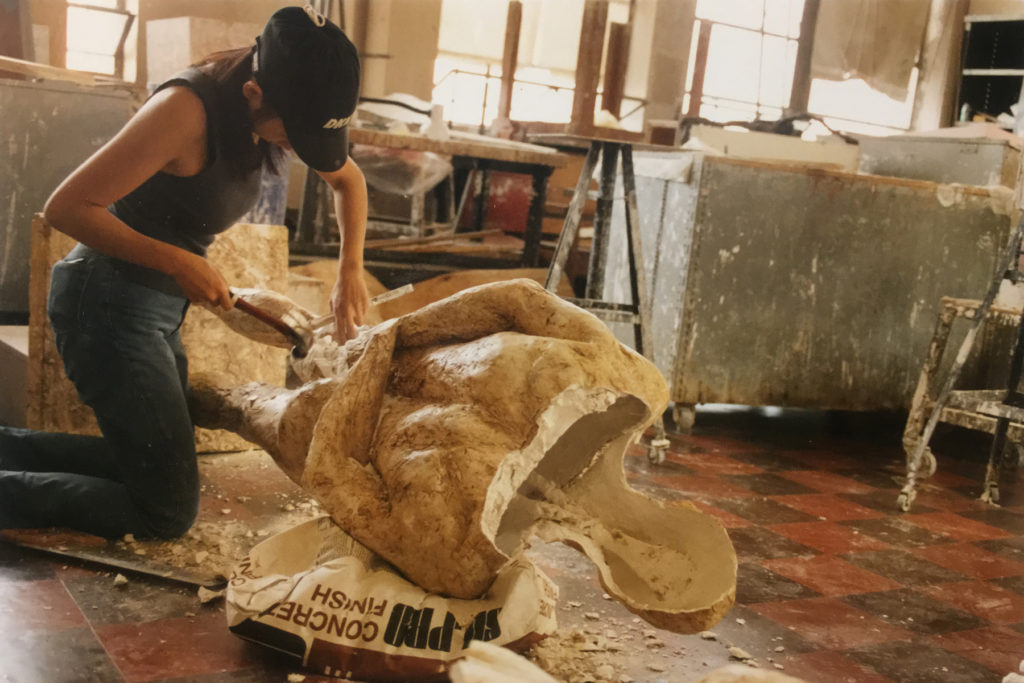
I went on to study at the College of Fine Arts, Boston University. During my undergraduate, I studied a variety of expressive techniques, from wood carving to welding, ceramics, and oil painting, and completely immersed myself in creation activities. Then I went on to graduate school at Tufts University, where I learned more about performance art and Fluxus. Fluxus, advocated by American artist George Maciunas in the 1960s, is an avant-garde art movement that mixes a wide range of genres such as art, music, and dance. I was really influenced by Fluxus.
Although I’d spent much time on actually sculpting something majoring in sculpture as an undergraduate student, I became more fascinated with the idea of “social sculpture” proposed by German artist Joseph Beuys. I strongly sympathized with the idea that “anyone can leave a sculpture in society through his or her own creativity, or in other words, leave a good value” This has formed my foundation as an artist.
After completing her master’s degree, Hikoro went on to work at the MIT List Visual Arts Center, MIT’s contemporary art museum and the Museum of Fine Arts, Boston.
Hiroko: As an artist in the U.S., I was mainly involved in community-building activities, utilizing the power of art to revitalize various neighborhoods by encouraging citizen and resident participation and integrating it with local development. Also, my encounter with Yoko Ono was a milestone for me. At first, I worked with her as an artist intern, but thankfully, we’ve had many opportunities to work together since.
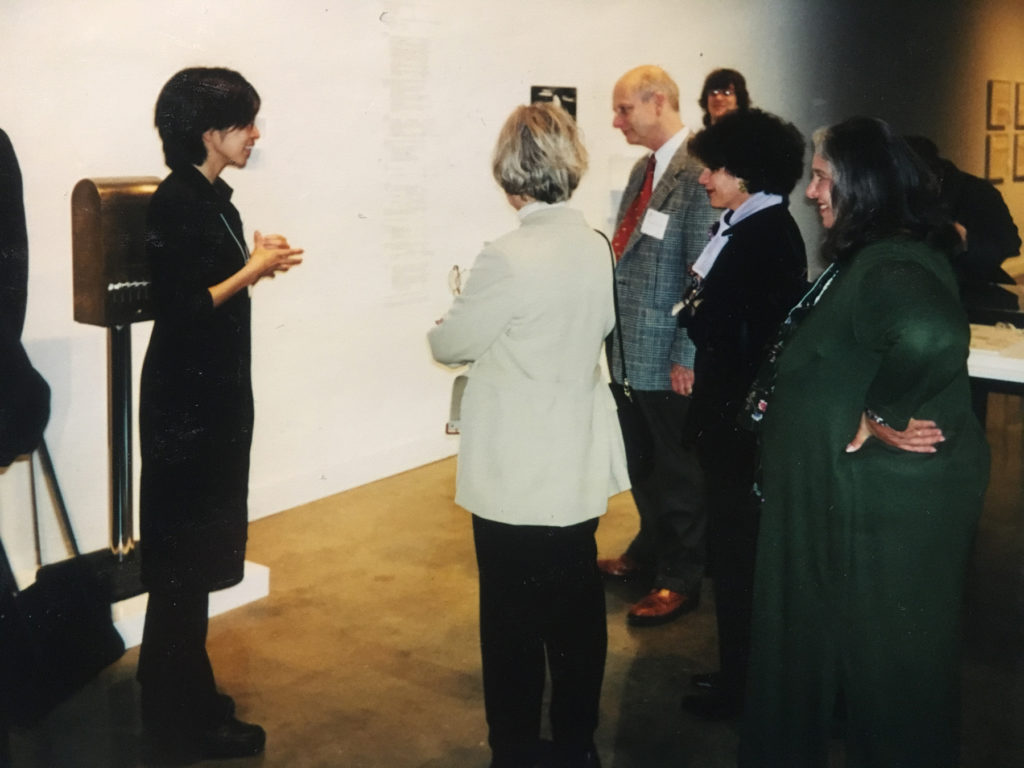
After spending 18 years in Boston and 3 years in California, Hiroko moved back to Tokyo at the age of 39. What navigated her move was the Great East Japan Earthquake in 2011.
Hiroko: That earthquake turned into an opportunity for me to think about life. When I saw how deeply people got hurt both physically and mentally, I felt that there was something I could do to be helpful from the perspective of art. Initially, I kept visiting the disaster area as a volunteer, but I felt there was a limit to the extent to which I could get involved. I also began to feel that I wanted to care for my own parents by myself. In that sense, I think the earthquake was also an opportunity for me to think about where I would like to put my life from now on.
As I left Japan right after graduating from high school, I had no common sense in Japan, especially in the business world where older men exercise their authorities in many scenes (laughs). It would be a lie if I say I wasn’t worried about whether or not I would be accepted in the Japanese work environment. However, just like my 18-year-old self who easily took the first step out to new experiences, my 39-year-old self was also able to step into something new without hesitation. By nature, I tend to be preoccupied with what I can and should do right now, and I may not be able to think much about anything other than what is right in front of me. Although I have an axis of what I want to do, I don’t know what it is until I try it, and I guess I’m eventually the type of person who can’t move forward until I myself experience it.
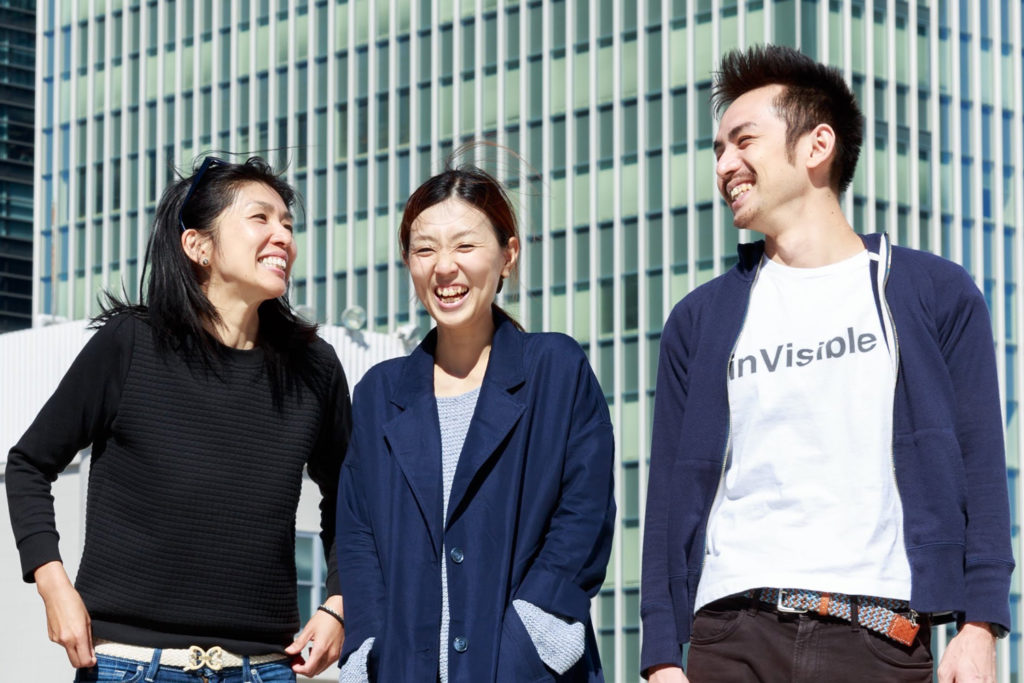
Yes, Hiroko’s curiosity and sense of adventure did not change even as she got older. A few years after returning to Japan, Hiroko and her friends launched an NPO named InVisible. The name comes from their goal to create new value in society by making the invisible visible through engaging projects that leverage art as a catalyst. Since then, she has been working on many “strange projects that are difficult to understand at first glance.” I have personally participated in several of these projects, and one of the most impressive was “Classic Radio Gymnastics.” If I write it down from memory, it might look something like this…
Still very early in the morning, people began to gather out of nowhere in the outdoor spaces of Roppongi Hills. Young couples, friends, and elderly couples, all dressed in stylish sporty outfits. As a chilly breeze blew, reminding us of the beginning of winter, several musicians in formal tuxedos and dresses (members of the Japan Philharmonic Orchestra!) appeared and began playing classical music. The participants enjoyed the music with warm drinks in their hands. So far, it looked like a nice outdoor classical event, except for the time of performance, which was a bit unusual.
Then came the climax. The musicians started to play “Radio Gymnastics No. 1”, which everyone knows in Japan. The crowd cheered and laughed with smile. And it was time for moving the body. Guided by the sound of trumpets, each one of us enjoyed the time with a sense of fun and seriousness, but also with a sense of humor. When it was done, the crowd all applauded in unison for the magical time and space they just shared.
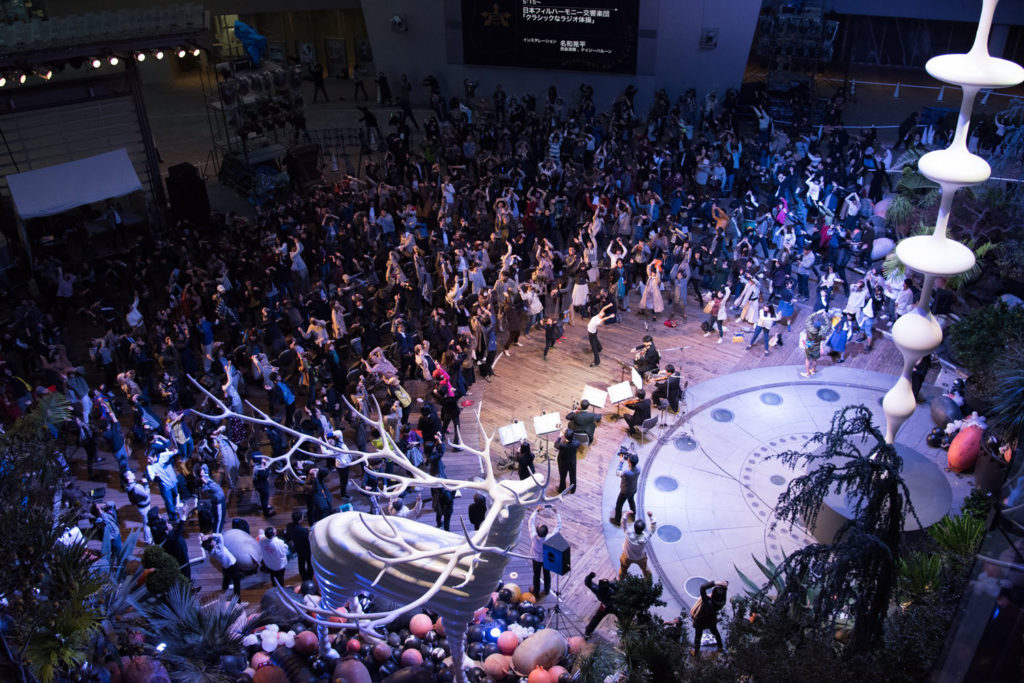
Hiroko: Classical music and radio gymnastics is a combination you probably don’t see or imagine very often. I try to tickle people’s playfulness by bringing such an outlandish idea to life. “Classical Radio Gymnastics” is an example of how I was able to express playfulness, humor, and the health of the city based on the idea that the city is a playground while utilizing a professional musician’s performance as a tool for the familiar radio gymnastics.
Inheriting beauty, frugally but sustainably
It’s been seven years since Hiroko launched inVisible in 2015. From now on, she would like to promote her activities not only as a co-founder of an NPO, but also as an individual named Hiroko Kikuchi.
Hiroko: At inVisible, I have been quite focusing on what I’m good at, or in other words, what is easy to work with, using the means of art. It has been exactly 10 years since I moved my base of activities to Japan after the earthquake. Up until now, my activities have been focused on “for the sake of society,” but from now on, I would like to spend a little more time on “for the sake of my purpose” as well, while being conscious of what I should do and what I want to do.
One of such activities I have in mind is for the young generation including high school students. When I have the opportunity to interact with young people, I often feel that their world is not yet open to the possibilities of the world, and that they seldom express their true feelings. I would like to create an environment in Japan where they can express themselves more honestly and openly. I believe that the education I received in the U.S. had a great impact on such thinking as I was continuously asking myself who I was and immersed myself in the culture that affirmed being different from others. Living in such an environment, I learned the importance of self-expression and diversity, and I would like to pass this learning on to the young generation.
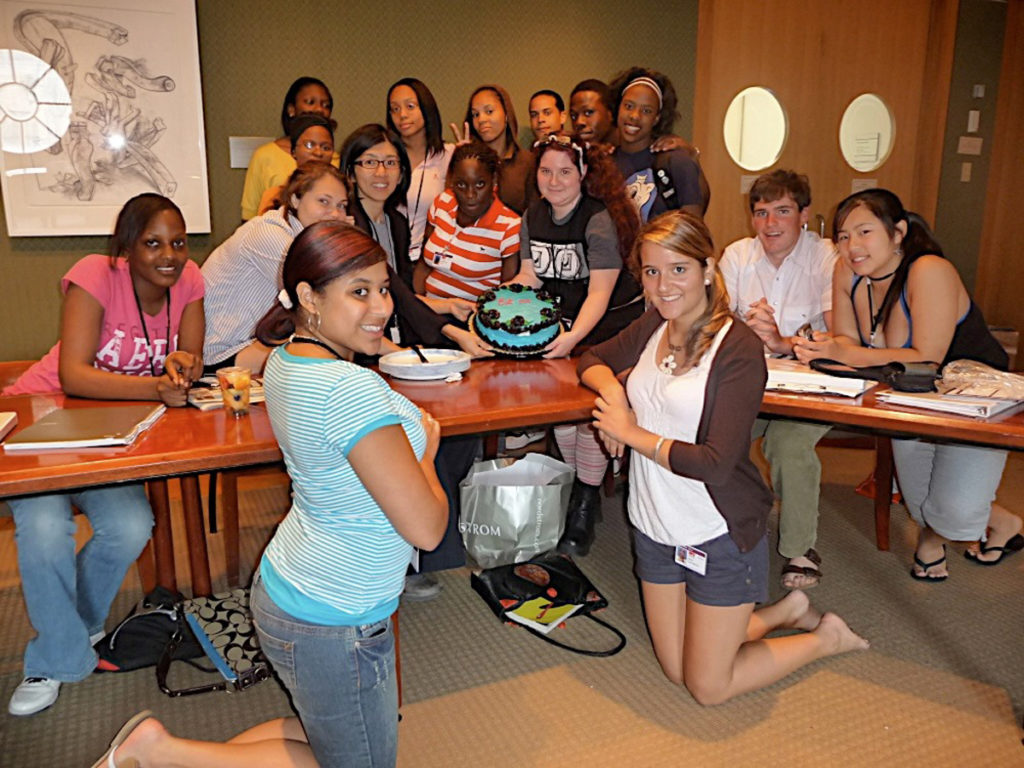
Also, I want to keep committing myself to steadily conveying the beauty of Japanese culture through art. Today, Japan is facing many social issues, but Japanese culture still has many beautiful values that other countries do not have. Development of the society is important, but there are also things that should not be lost through development. It is necessary to continue to emphasize this important lesson and I would like to make my future activities as sustainable as possible, no matter how frugal they are.
Creating a world in which every person can express his or her own unique answers
Hiroko says that she is aware that her challenge is not having an ego as an artist. At the same time, she says that she has made a strong decision that she won’t take work with a fixed answer.
Hiroko: As I myself am involved in such a variety of activities under the title of “artist,” I think it is difficult for people to understand me clearly as someone who creates this or that. However, creating something is not the only form of art, I will continue to intentionally blur the line between what I do, betraying people’s expectations in a good way.
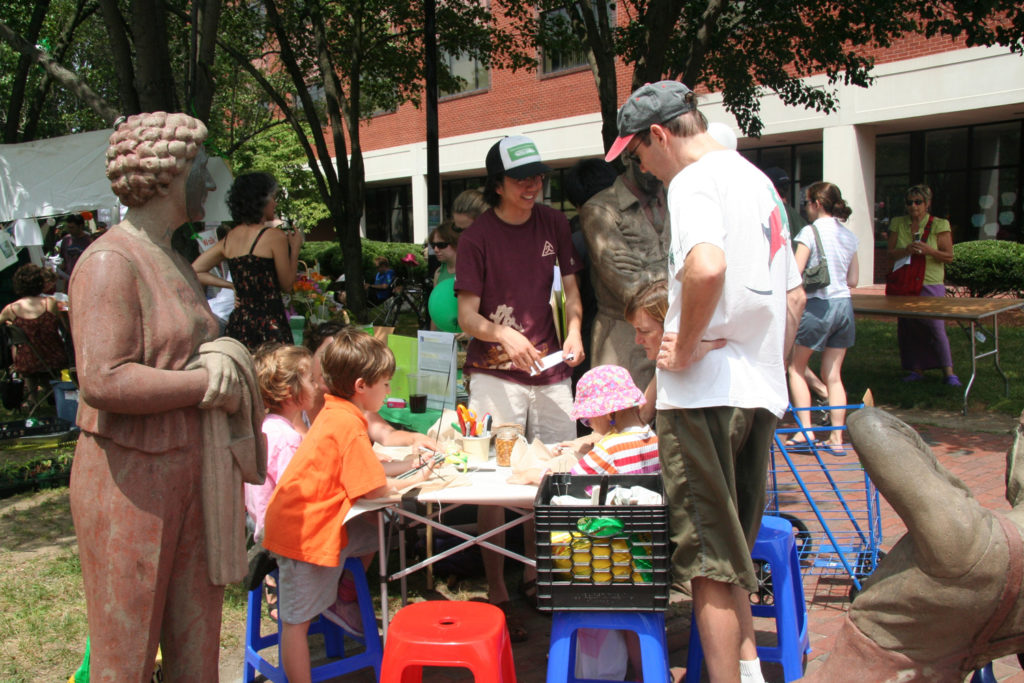
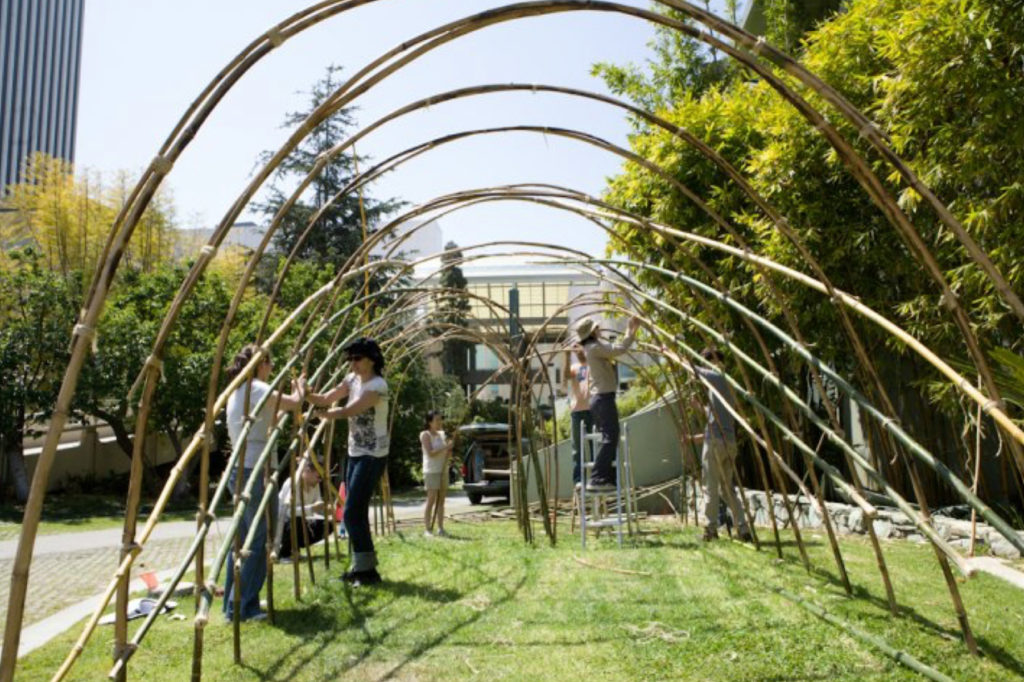
Also, I’ve never looked for a job or had a direct boss in my life (laughs). Even when I’ve worked within an organization like MIT or the Museum of Fine Arts, Boston, I’ve always had the experience of creating my own work from scratch. That’s why I talked a lot with my coworkers and realized that there are many things I can’t do on my own. “How can I create work that only I can do?” That’s what I’m always thinking, and that’s how I’ve ended up as I have. The answer on what I want to do and what only I can do exists in my own heart. However small it is, I’ve been creating one from zero, and that’s what I want to keep focusing on.
And, by letting people see my activities, I would like to encourage future generations and female to feel the range of expression they can leverage to express their thoughts. I think the world will become more fun if more people recognize that there are no fixed answers and start creating their own answers more playfully, regardless of the form of expression. Don’t you think so as well?
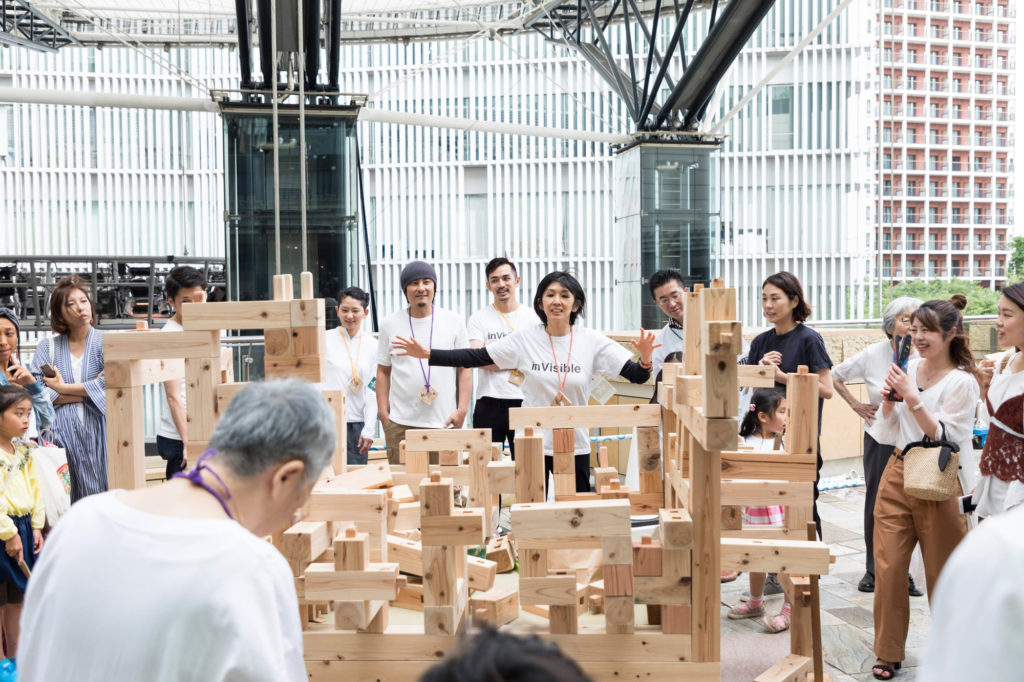
Post-Interview Reflection
When Hiroko moved her base from the U.S. to Japan, there was one thing she felt strongly about. In the U.S., she was evaluated on “how to produce output that goes beyond what was decided or requested,” whereas in Japan, she was evaluated on “faithfully following and executing what was commissioned.” If you try to bring a new point of view to the work, it is often regarded as “superfluous or unnecessary.”
“I want to be appreciated for doing things well and not making mistakes” … It is natural that many people tend to think so, since humans are creatures that live and are kept alive in groups. In fact, we have survived to this day by anticipating and avoiding risks. However, if such risk-aversive thinking becomes too strong, the atmosphere of trying to create something new will be easily crushed.“
Today we are feeling a sense of stagnation in our society. Even in such a time, I’d like to envision that we become more faithful to ourselves while opening up our own unique path creatively, instead of letting someone else tell us the fixed path to follow. As Hiroko said, the world will be more fun if more and more people recognize that there are no fixed answers and work playfully to create their own answers.
The North Star that guides the playful ants on their journey is the idea of “what I want to be” and “what value I want to bring to society.” Guided by these thoughts, let’s experiment playfully and with a sense of fun. Let’s enjoy trial and error. That playfulness will spark off the people around you, each and every one of them, and eventually become a driving force to change society, however small it is.
Stay Playful.
『The Playful Ants that change the world』
In an ant society, you can easily identify the herd of “Worker Ants”—the textbook definition of ants, the ones who continuously carry the food. If you take a closer look, you may notice that there’s a different group of ants walking about playfully in their own world. These are “Playful Ants”—ants and thanks to their curiosity, they at times stumble across an unexpected feeding ground or detect sudden threats in advance allowing them to warn the colony of danger in advance.
In this interview series, I introduce interesting lifestyles and work styles of different “Playful Ants”, in order to help incubate them into this world.
Each human being is as small as an ant. However, if each ant pursues his or her own path purposefully and playfully, that path can connect to an opportunity to explore and create something new. That can turn into the power to change the world in its own way. I’ve come to believe so after spending many years on designing and leading practical innovation projects, and working with many global and Japanese corporations as a consultant.
Yasuhiro Karakawa (Playful Ants Incubator)
With a purpose of “incubating Playful Ants both in the corporations and the society” Yasu has been leading practical innovation projects with global corporations in more than 10 countries while also serving as a strategy advisor and a guest lecturer.











